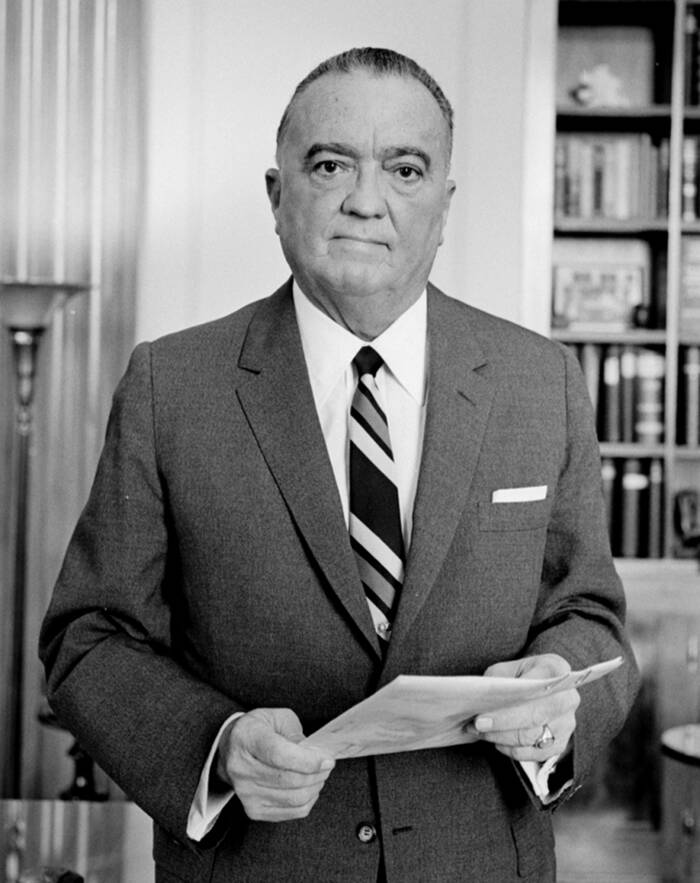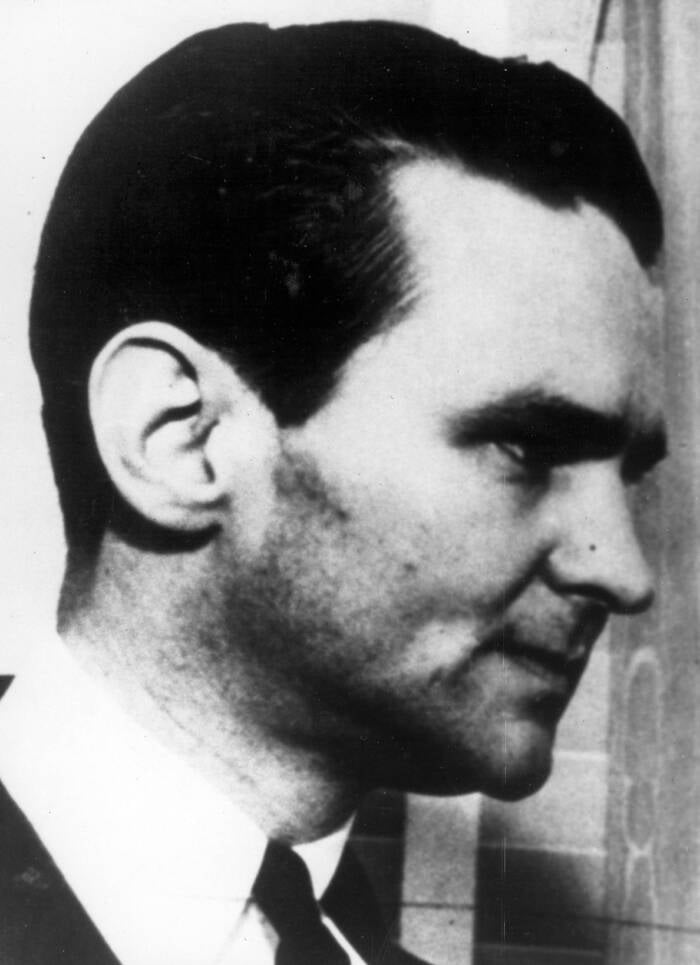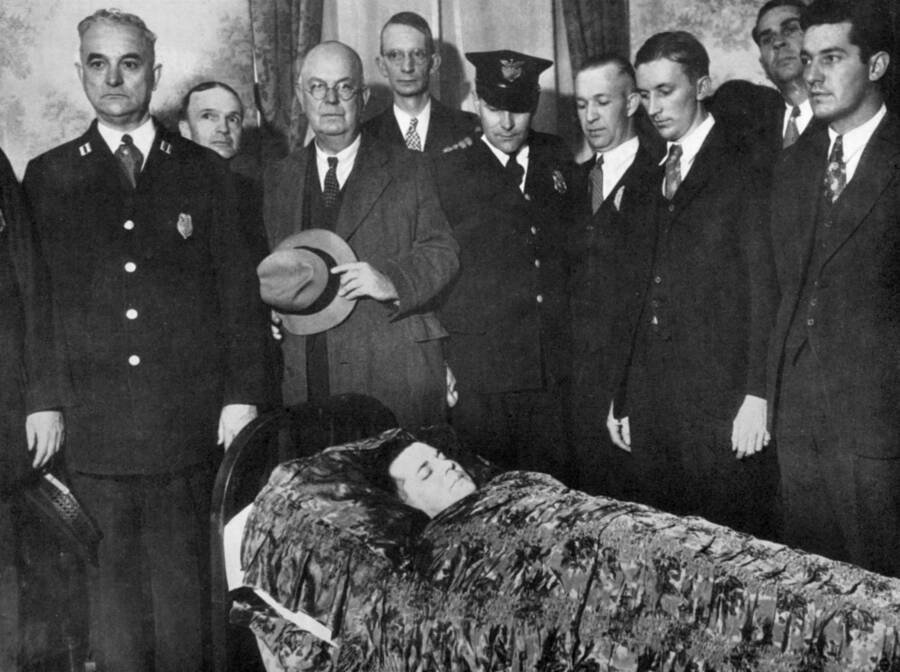Between 1929 and 1934, Charles Arthur "Pretty Boy" Floyd carried out a daring crime spree across the American Midwest, robbing 30 banks and killing as many as 10 people before he was gunned down by FBI agents in an Ohio cornfield.

Public DomainCharles Arthur “Pretty Boy” Floyd, a notorious bank robber from the Prohibition era.
During the Great Depression, Pretty Boy Floyd rose to prominence as one of the most notorious bank robbers in history. Rumor had it that he was a generous man who destroyed mortgage documents as he stuffed his bags full of cash from bank vaults, freeing struggling citizens from their biggest debts. It may not be true, but the American public latched onto the idea, and Floyd became something of a folk hero.
Floyd began his criminal career at an early age, but his infamous spree began in 1929. Over the next five years, he robbed 30 banks and killed as many as 10 men across the Midwest, all while fleeing from the law. After John Dillinger died in July 1934, Pretty Boy Floyd even became the FBI’s “Public Enemy Number One.”
But his life of crime came to an end in October 1934 when federal agents finally caught up with him in Ohio. Floyd was gunned down in a cornfield, and his last words were allegedly, “I’m done for; you’ve hit me twice.”
His funeral was the biggest in the history of Oklahoma, with more than 20,000 people in attendance, all gathered to pay their respects to “the Robin Hood of the Cookson Hills.”
Pretty Boy Floyd’s Early Criminal Career
Charles Arthur “Pretty Boy” Floyd was born in Georgia on Feb. 3, 1904, but his family, like many others, moved to Oklahoma to start a farm in the early years of the 20th century. And like many Oklahoma farmers, they were desperately poor. Floyd, tired of living in poverty, turned to crime. He was first arrested for petty theft at age 18 after stealing $3.50 (roughly $65 today) from a local post office.
Three years later, he graduated to more serious theft and was arrested for payroll robbery in St. Louis. For this crime, Floyd was sentenced to five years in prison, but he served just three and a half before he was granted parole. Upon his release, Floyd drifted toward Kansas City, where he quickly got himself involved with the city’s criminal underworld.

FBIAn FBI identification order for Charles Arthur Floyd.
Floyd’s specialty remained highway robbery. He and his accomplices would stop cars carrying money at gunpoint and demand all the valuables within. Between 1929 and 1930, Floyd was arrested multiple times on suspicion of armed robbery, but the police could never prove anything conclusively.
Around this time, Floyd picked up the nickname he would have for the rest of his life: “Pretty Boy.” However, the story of how it came about varies. Some say it was started by co-workers who mocked the nice clothes he wore while doing manual labor. Others claim one of Floyd’s robbery victims told police “a pretty boy with apple cheeks” had taken his money.
Regardless of where it originated, Floyd hated the name — but he couldn’t seem to shake it. And he couldn’t shake his criminal tendencies, either.
Pretty Boy Floyd’s Life Of Crime, From Bank Robberies To The Kansas City Massacre
Not long after Pretty Boy Floyd was released from prison in 1929, he developed the talent he was best known for: robbing banks.
He ran with a number of different criminals who started hitting financial institutions throughout the Midwest and Oklahoma. His crimes made headlines across the country, and readers couldn’t get enough of Pretty Boy Floyd. His flair for the dramatic — he was particularly fond of toting around a Tommy gun — and his ability to evade capture made him a media sensation.

Public DomainJ. Edgar Hoover, Director of the Bureau of Investigation, declared Pretty Boy Floyd “Public Enemy Number One” in 1934.
A rumor — which was likely false — began to circulate that Floyd was destroying mortgage documents during his robberies. To many people who had seen their homes seized by banks, this made him a hero.
Then, on June 17, 1933, an incident occurred that put Pretty Boy Floyd in the newspapers once again. Today, however, many experts don’t believe he had anything to do with the crime.
That morning, a fugitive named Frank Nash who had escaped from federal prison and been recaptured was set to travel through Kansas City on his way back to the U.S. Penitentiary in Leavenworth, Kansas. Nash’s friends caught wind of the route police would be traveling with the outlaw and decided to free him once again.

Public DomainThe aftermath of the Kansas City Massacre.
According to the FBI, Pretty Boy Floyd and his accomplice Adam Richetti were enlisted to help. They purportedly joined up with another criminal named Vernon Miller and hid outside of the train station in Kansas City to wait for Nash to arrive. When they spotted police escorting him from the building and toward a waiting car, they opened fire.
Within minutes, four police officers and Nash himself were dead. The incident became known as the Kansas City Massacre, and the FBI was convinced that Floyd was involved. However, Floyd consistently denied his connection to the crime, so the truth may never be known.
Still, with the FBI against him, Floyd’s days were numbered. After John Dillinger died in July 1934, J. Edgar Hoover declared Pretty Boy Floyd “Public Enemy Number One,” and the agency was determined to take him down.
The Final Days Of Public Enemy Number One
Hoping to stay ahead of the FBI, Floyd and Richetti fled first to Ohio, where they both picked up girlfriends. Together, the four traveled to New York before finally deciding to return to Oklahoma. But while driving through Ohio, Floyd lost control of their car, crashing it into a pole. Floyd and Richetti took their guns and sent their girlfriends into town to repair the vehicle.
However, the local police got word that there were suspicious men hanging around the outskirts of town and went to investigate. A shootout erupted, though Floyd escaped. Richetti, who had emptied his gun firing at the police, wasn’t so lucky. He was arrested and would later be executed in the gas chamber.

Public DomainMelvin Purvis, the agent who headed the takedown of Pretty Boy Floyd.
The police contacted the FBI to tell them they had Richetti in custody, and they warned the bureau that Pretty Boy Floyd might have been wounded in the gunfight. The FBI canvassed the area, stopping cars and questioning drivers. Floyd managed to steal another vehicle, but he was soon spotted by a team of local police and FBI agents in the town of East Liverpool.
There are a few different versions of what happened next, but the accounts agree that Floyd’s car was stopped by law enforcement officers who spotted him parked behind a corn crib in an attempt to hide.
The FBI reports that Floyd came out of the car with his gun drawn. The agents opened fire, striking him at least twice. As Pretty Boy Floyd lay dying, he managed to gasp out his final words. “I’m done for,” he said, according to the FBI. “You hit me twice.”

Smith Archive / Alamy Stock Photo Pretty Boy Floyd lies dead after a shootout with federal agents.
He was dead within 15 minutes. In his pockets, FBI agents found a watch and fob carved with 10 notches that supposedly tallied the number of men Floyd had killed.
Interestingly, local police told a completely different story.
In an interview decades later, in 1979, police officer Chester Smith told TIME that he shot Floyd in the arm, knocking him down. The lead FBI agent hunting the outlaw, Melvin Purvis, then approached Floyd while he lay on the ground to ask him some questions, but Floyd refused to answer. According to Smith, Purvis ordered one of his agents to execute Floyd with a burst from a Tommy gun.
The agents on the scene disputed this story, of course, making it just one more of the mysterious details of Pretty Boy Floyd’s life — and death.
After reading about the rise and fall of Pretty Boy Floyd, discover 25 interesting facts about Al Capone. Then learn about the cold-blooded revenge of Tennessee sheriff Buford Pusser.





